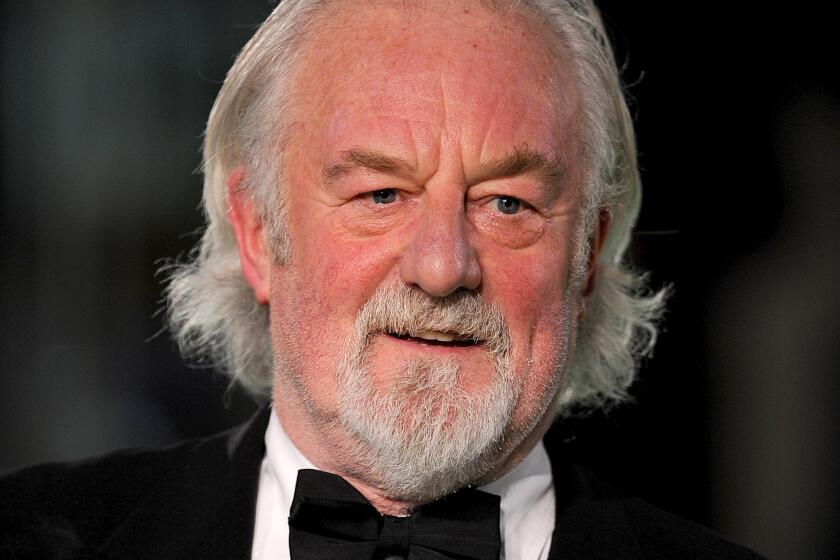Computer Artists Draw Interest From Attorneys
At a Halloween party in 2000, an actor dressed as the devil playing with a rubber handgun is shot and killed by an LAPD officer called to the Benedict Canyon house because of noise complaints.
To the police, the death of Anthony Dwain Lee was a tragic case of an officer stumbling onto what appeared to be an armed man. Fearing for his life, the officer fired in self-defense.
To Lee’s relatives, the 39-year-old actor was an innocent, unarmed man who was a victim of senseless police aggression.
Though they differed on what happened, both sides agreed on one thing: The best way to illustrate the opposing scenarios to a jury was by using computer-animated videos.
Although the civil lawsuit was eventually settled before trial, the dueling reenactments, which employ computer-animation techniques pioneered by Hollywood movie studios, demonstrate just how popular computer graphics have become as courtroom exhibits.
The use of the technology remains controversial -- some attorneys say it’s used to “Disney up” evidence -- but the animations are revolutionizing the way trials are conducted. Lawyers who once relied on dry, expert testimony and their own courtroom eloquence to lay out a case are now turning on television screens to get their point across.
Animations are being used extensively in civil litigation but also are increasingly common in criminal cases, by prosecutors and defense lawyers alike. But they aren’t cheap. Even a brief animation can cost $7,500 to $15,000.
The fear is that jurors will mistakenly believe they have witnessed the actual event, or that they will be swayed by glitzy theatrics instead of by the evidence.
“There’s this sense you get from watching an animated video that you’re somehow staring through a window into the past,” said David Sklansky, a UCLA criminal law professor. “But in reality, you’re not.”
In a recent, high-profile criminal case, a Los Angeles Superior Court judge barred a computer animation and other testimony from the penalty phase of a murder trial. The tape, according to the defendant’s lawyer, was critical in proving that his client could not have committed the crime he was convicted of: executing an LAPD motorcycle officer during a routine traffic stop. The lawyer is fighting in federal court to have the computer reenactment shown to a new jury.
The defendant, Kenneth Gay, was convicted of the 1983 Lake View Terrace murder of LAPD Officer Paul Verna. In 1998, the California Supreme Court overturned his death sentence on the grounds of incompetent counsel but left intact the guilty verdict.
Gay’s new lawyer, Kenneth Lezin, a deputy public defender, hired a computer-animation firm to reconstruct the shooting for the second sentencing trial.
The animation, which is roughly equivalent to the type found in a video game, shows Gay’s co-defendant -- Raynard Cummings -- stepping from the stopped vehicle with a revolver. Bright red lines extend from the barrel of the gun, showing the presumed path of six bullets fired into the police officer as he staggers back to his motorcycle.
Prosecutors and Cummings dispute Gay’s version. They say Cummings shot the officer once from the back seat, then handed the revolver to Gay, who fired five more shots into the officer.
Lezin said this is impossible, based on the trajectory of the bullets. The video, he said, demonstrates the only way in which the officer could have died: He was pursued and shot repeatedly by Cummings.
“It’s like a jigsaw puzzle,” Lezin said. “That’s why we need an animation to illustrate it. It’s very rare that you can use this type of technology in a defense case, because very rarely are we proving something. In this case, we were essentially trying to prosecute the other guy.”
Computer animation was first used in a California criminal case in 1992. Jim Mitchell, a San Francisco pornography mogul, was accused of killing his brother and business partner, Artie.
Though he claimed the killing was accidental, California prosecutors used the animation to help explain to a jury how Mitchell could have committed the crime. The simple, cartoon-like animation showed a sleeping figure that resembled a crash-test dummy lying in bed. The dummy suddenly awakens as the first of eight gunshots is fired in his direction. Walking down a corridor, the gray figure is hit by shots in the arm, the chest and finally the head. He crumples and falls to the floor.
Mitchell was convicted. He appealed his conviction on the basis that the animation was “speculative” and “prejudicial.” The appeals court disagreed, and Mitchell served three years of a six-year manslaughter sentence.
Since then, use of computer animations has grown increasingly popular, particularly in civil litigation. Auto collisions, plane accidents, workplace injuries and the workings of machinery and medical equipment are the most common cases.
Production companies say that more often than not, their reenactments don’t make it before a jury. Once presented with a polished animation, the opposing side often sees it as a sign that their opponent is armed to the teeth and considers settling.
“Very rarely does this stuff go to court,” said Stuart Gold of Berkeley’s Shadow and Light Productions. “It’s basically used as a club.... It’s like the trump card.”
Still, experts say that even though computer animation has its place in the courtroom, it is no substitute for a strong case and a persuasive lawyer.







